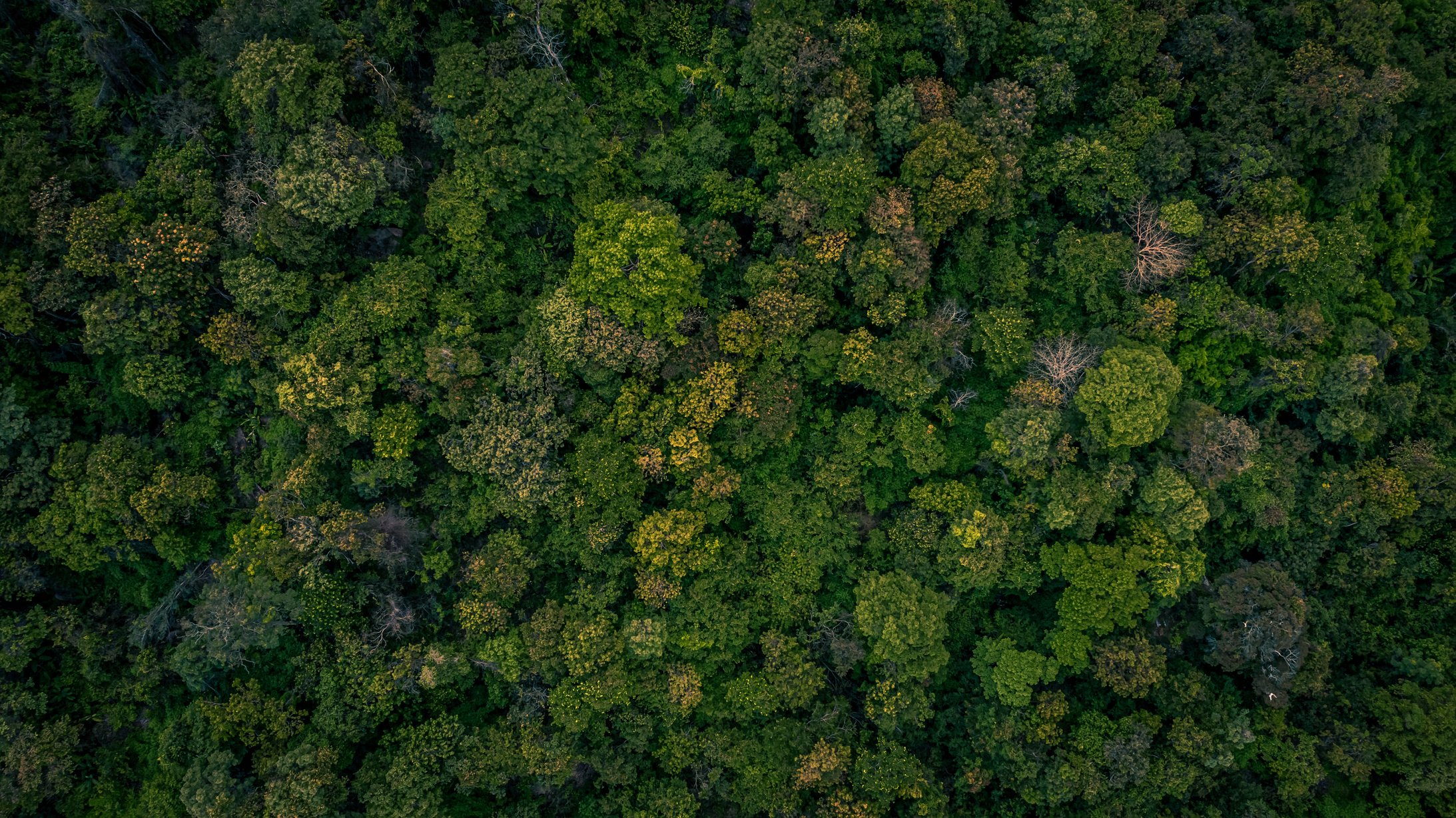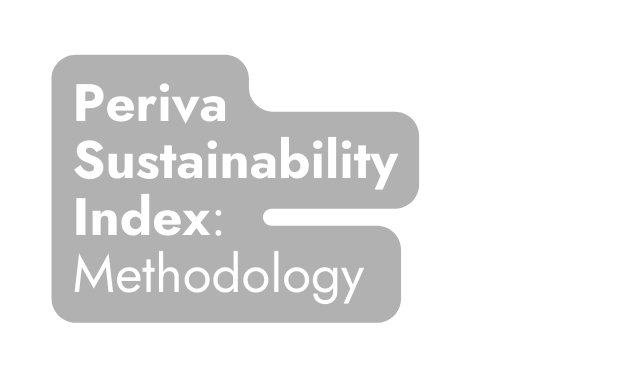

You can’t fix what you can’t measure. This is as true of environmental sustainability, as anything else. And there yet hasn’t been a way to measure sustainability of cities in a standardized way.
That’s why we created the Periva Sustainability Index - a live ranking of cities across various evolving and expanding sets of sectors.
Here you can get detailed explanations of the quantitative, qualitative, and technical methodologies used in the Periva Sustainability Index.
Index Sectors
Air Quality (Weight 0.1)
We collected annual average air quality index (AQI) data from IQAir, which measures the density of particulate matter less than or equal to 2.5 micrometers in the air (PM2.5). There are 6 US measures of air quality, but these data reflect only one. AQI ranges from 0 to 500, but a healthy AQI is 0 to 5 PM2.5. We averaged the last 6 years of data (2018-2023) for each city. If a city had recent data only, say 2023 and 2022, then we assumed all previous years were equal to the earliest year (2022 in this example). We did this for two reasons, 1) we want to include as many cities as possible and 2) this choice effectively gives more recent data a higher weight for cities not reporting as far back as 2018.
Energy Use (Weight 0.4)
City-level energy use data was obtained from Open Energy Data Initiative (OEDI) based on the data completed on Dec 3, 2019. Their underlying model relies on 2012-2016 5-year American Community Survey population and employment estimates, so we used their per capita energy consumption estimates. We chose eight features to include: residential, commercial, and industrial electricity and natural gas consumption (6 features), as well as on road consumption of gasoline and diesel (2 features). For commercial estimates we chose the local (city-level) calibration of data rather than state. More energy used for any feature is less sustainable so they were all translated to the compliment after re-scaling.
Reuse (Weight 0.05)
Sustainable stores and refillery location data was obtained from Google Maps in a search for businesses with “sustainable” or “refillery” in the title. Little Free Libraries were also obtained from their location map. All data was collected by June 2024, so newer points of interest are not in our dataset. Any locations marked as “permanently” or “temporarily closed” were removed. We assigned each location to a city based on the map address and normalized it to per capita by dividing by the city’s maximum 2021 population estimate (mean plus the margin of error) from the 2018-2021 American Community Survey. With so many locations per city, we have not validated that each location is a refillery or a truly sustainable store. If you notice any location that should not be listed, please let us know.
Library use data was obtained from the 2021 and 2022 Public Libraries Survey. The data reports on city library systems and not single library locations. The annual count of all visits to all library systems within a city was normalized by the population of the legal service area. Large city libraries may service small but nearby towns without their own library, so we could not use the city’s population alone. The Public Libraries Survey does not provide what the legal service area boundaries are, so no attempt was made to divide visits among the surrounding cities.
Farming (Weight 0.05)
Local farms were obtained from Google Maps with the search term “farm” and assigned to cities in the same way as sustainable stores and refilleries. As a result, local farm locations may be the location of the farmer’s market they frequent and not the precise location of the farm. Hence we did not assign farm acreage to each city, just farms per capita. In addition we obtained more local farm and community garden locations from My Health Forward in June 2024. Farms from both datasets were matched on name, latitude, and longitude to remove duplicates.
Public Transportation (Weight 0.2)
Access to public transportation was obtained from the US Environmental Protection Agency (EPA). Rather than the percentile rank index provided by the EPA, we chose the proportion of the population in each census block group (CBG) with access to other CBGs by public transportation. They calculate this by estimating how many people (percent of the population) from the surrounding area could access a CBG by public transportation in 45 minutes. Census block groups are groupings of census blocks (the smallest polygon created by the Census Bureau) based on their similarity in measures like median income, age, race, etc. What blocks exist can change every 10 years with a new census if an area has significant changes to the underlying population. This data is based on the 2010 census and 2012 public transit data.
Walkability (Weight 0.2)
The National Walkability Index was also obtained from the EPA based on the 2019 US Census for all CBGs. The index ranges from 1 to 20, with a higher score being more walkable. It ranks a city’s density, the diversity of land-use, and people’s proximity to public transit among other factors to see which CBGs in the US are the most walkable.
Feature Re-scaling
To get the data on the same scale, 0-1000, as the Periva Sustainability Index (PSI) we performed min-max re-scaling. For example, if a city has an average AQI of 20 in 2023, then the rescaled value is (20 - min)/(max - min) = (20 - 0)/(500 - 0) = 0.04. However, the PSI increases as a city becomes more sustainable, so we have to transform this data to reflect a larger number being better. We can do this by simply subtracting the scaled value from 1, so 1 - 0.04 = 0.96. We perform a weighted average of all features, then multiply by 1,000 and round for ease of visualization and discussion.
You can find the full list of each feature’s minimum, maximum, and if it was translated to the compliment (1 - x) here. The min and max of each dataset is taken from all locations in the US we have data for (not only cities in the index), then rounded down for the minimum and up for the maximum (see theoretical_min and theoretical_max columns).
The maximum values for gallons of gasoline and diesel per capita are very large. Lake Buena Vista and Bay Lake, FL are the home of Disney World, so few people live there but it has a large energy consumption. Our database doesn’t currently distinguish between everyday cities where people live and industrial cities only where people work. We are working on an unbiased approach to rank typical cities from their industrial neighbors.
Sector Weights
Sectors are combined as a weighted average to vary their importance in the final index. We chose the weights based on community feedback and our knowledge of the data quality. As the PSI expands to add in new and better data streams we will revise weightings where appropriate. New sectors may be created when it makes sense. For each individual features’ weight and the minimum and maximum used to rescale the data please see here.
Geospatial Data
The above data comes in multiple spatial scales, from points to counties. To translate between them we used crosswalks from Geocorr 2022 with 2020 census population weighted boundaries. We followed the Census Designated Place (CDP) boundaries for cities and towns. The only exception is Honolulu, HI because it consists of two CDPs, East Honolulu and Urban Honolulu. Population data was summed, then walkability and access to public transportation were averaged. All data on population size was taken from the 2021-2018 5-year American Community Survey, accessed with ‘tidycensus’ package version 1.6 in R version 4.3.3.
What’s to Come
The Periva Sustainability Index is a growing and changing measure of sustainability in cities. Data like air quality change every second, while population estimates change annually. We welcome all feedback from the community as we think deeper about what it means to be sustainable as a person, city, and country.
More Features
As more features become available we’ll update the sector each belongs to or add new sectors. Every new addition may require the re-distribution of weights. Some items we are working on adding next are:
- Greenhouse gas (GHG) emissions produced to generate the natural gas/electricity consumed
- Expand farming and land cover data
- Greenspaces + their accessibility and green cover (heat islands are not sustainable)
- Obtain more recent energy consumption data at a city scale
- Registered electric vehicles
- Plastic bag or styrofoam bans
- Waste sent to landfills
- Include Walk Scores, Bike Scores, and Transit Scores for each city
- EVs and EV infrastructure.
- Sustainability of home and commercial buildings
- Countries beyond the US.
- How easily sustainable points of interest can be accessed without a car, for example if only one refillery in town and it would take hours to reach by bus for most residents
Where’s My City?
The Periva Sustainability Index is a growing and changing measure of sustainability in cities. Data like air quality change every second, while population estimates change annually. We welcome all feedback from the community as we think deeper about what it means to be sustainable as a person, city, and country.
